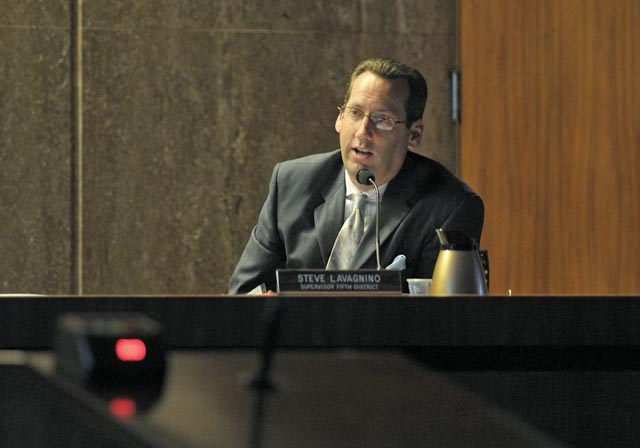Red Flags Flapping
Affordable Housing Operator Flames Out; Supes Grapple to Limit Damage

It wasn’t a pretty picture, and there were no quick fixes in sight. Four of the five county supervisors found themselves struggling to limit the damage caused by the financial flameout of a politically connected nonprofit housing agency that owns 250 affordable rental units and runs two homeless shelters located in Lompoc. The fifth supervisor, Joni Gray, recused herself because of a conflict of interest. Her law firm, she explained, provided legal representation to the Lompoc Housing and Community Development Corporation — which announced last week it was going out of business after 21 years in operation.
What Gray could have also have noted — but didn’t — was that her longtime administrative assistant Susan Warnstrom was president of the board for Lompoc Housing, which owns 35 residential properties, a vintage movie theater, one commercial property, and two shelters with a 75-bed capacity. Because the County of Santa Barbara is the lead agency through which millions of state and federal money had been funneled to Lompoc Housing, the county could find itself on the hook to pay back as much as $1.4 million. In addition, the county stands to lose $2.89 million it directly invested in the nonprofit housing development corporation. Among the many questions confronted by Supervisor Gray’s colleagues was where this money might come from (it remains unclear), what can be done to protect the affordable housing stock and homeless shelters from foreclosure (not much), and why there hadn’t been any warning flags. It turns out there had been.
Lompoc Housing is required to submit financial reports to county administrators every year. But the last such report Lompoc Housing turned in was five years ago. Efforts to work with the agency have been a collective exercise in frustration for the supervisors and for county housing administrators. Conspicuously absent from the deliberations were Warnstrom, Lompoc Housing executive director Sue Erlich, or any members of the board. According to Terri Nisich, assistant county executive officer, they’d been invited. A San Francisco-based attorney retained by Lompoc Housing — Stephen Taber — offered to attend telephonically, but was told not to bother.
While Lompoc Housing’s problems clearly predated the stock market crash of 2008, its property values plunged as the housing bubble burst. Nisich said officials with the nonprofit explained they lacked the revenues to hire an accountant and also make the necessary repairs to maintain their properties. In January, county officials called on counterparts with the Department of Housing and Urban Development to intervene. In March, County Auditor-Controller Bob Geis recommended that Lompoc Housing be denied any additional funding until its financial house was put in order. By August, it appeared as though the Cabrillo Economic Development Corporation — which had a solid history with affordable-housing developments — might take over the troubled operation. The Cabrillo investors walked away when Lompoc Housing officials failed to provide the necessary financial documents. At the end of September, one of Lompoc Housing’s major creditors — Pacific Western Bank — foreclosed on nine of the rental properties.
How could the homeless shelters be spared a similar fate, the supervisors asked, and the beds be preserved? The best way, they were told, was for the County of Santa Barbara — as the chief creditor for those properties — to initiate judicial foreclosure actions against the shelters. That way, the county could exert a level of control over the disposition of Lompoc Housing properties that has eluded it thus far. Preliminary discussions between Lompoc Housing and other shelter operators — Casa Esperanza and Good Samaritan — have been decidedly one-sided and fruitless. One speaker who’d worked with Lompoc Housing in the past explained there was a strong interest in maintaining “local control” and not becoming a “territorial outpost” for other shelter operators.
When asked about preserving the affordable housing stock, Nisich sought to reassure the supervisors that Pacific Western had expressed an interest in preserving the 142 affordable housing units in the nine foreclosed properties. A decidedly un-mollified Supervisor Janet Wolf shot back, “An interest?” Wolf expressed her unhappiness many times. Supervisor Doreen Farr said she was tired of having been asked “to go the extra mile” by an agency that couldn’t provide even the most rudimentary financial documents.
Supervisor Salud Carbajal cautioned against “playing the blame game” and expressed hope that all the stakeholders could get together to think creatively of how to “salvage” what has been a substantial investment of state and federal dollars into affordable housing. The stakes, he said, were too high for what he described as “the sterile, generic, matter-of-fact” discussion about “passing the baton.” But perhaps Supervisor Steve Lavagnino put it most succinctly: “Now we’re being asked to fix the patient,” he said, “but the patient is already dead.”


